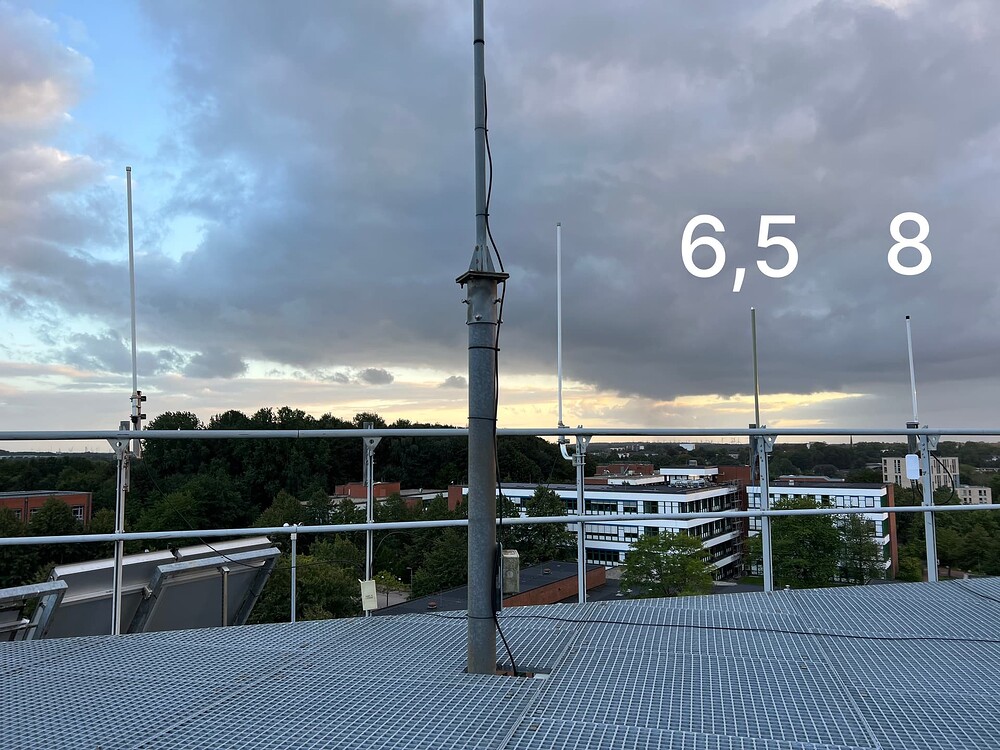In the context of a scientific research project, two antennas were compared. The goal was to evaluate their reception performance and determine whether, in urban areas or the specific area we are investigating, the beamwidth angle is preferable to pure gain measured in dBi. LoRaWAN appeared to be predestined for the precise evaluation of SNR and RSSI.
Therefore, two MicroTik-Gateways LR8 wAP were set up identical in settings and firmware, except for the antennas, to avoid interference. They were placed a minimum distance of one lambda of the 868 MHz wavelength apart, yet close enough to ensure similar conditions, and operated simultaneously. Antenna 1 with 8 dBi has a beamwidth of 10° (ID lorawan-at-hs-flensburg-de), and Antenna 2 with 6.5 dBi gain has a beamwidth of 30° (ID eui-323433362e006200).
Unfortunately, on the first day of reception (August 11), both gateways received a large volume of data, which was traceable in the “Live Data” tab.
After 3 hours, 23 minutes, and 59 seconds, the gateway with the 6.5 dBi antenna stopped receiving anything, while the gateway with the 8 dBi antenna continued to deliver very good reception performance 24 hours a day.
I reset the gateway with the 6.5 dBi antenna on August 14, and the situation did not change; according to the “Live Data” tab in the TTN Console, it received and transmitted only a single packet, then nothing more.
I let it run and restarted the gateway with the 6.5 dBi antenna on September 6, after which it was active for 4 hours, 21 minutes, and about 52 seconds. After that, it again received absolutely nothing.
A reset on November 6 did not change the situation, so it continued to receive NOTHING, leading me to restart it one last time on November 26, after which it received and transmitted sensor data to TTN for 1 hour, 7 minutes, and about 25 seconds.
After that, I was no longer able to get the gateway to receive anything.
Here is the complete log again:
August 11, 2023: Reception was active for 3 hours, 23 minutes, and about 59 seconds.
August 14, 2023: Only one reception time was registered on this day, so the active duration is listed as 0 seconds.
September 6, 2023: Reception was active for 4 hours, 21 minutes, and about 52 seconds.
November 6, 2023: Only one reception time was registered on this day as well, resulting in an active duration of 0 seconds.
November 26, 2023: Reception was active for 1 hour, 7 minutes, and about 25 seconds.
An active duration of 0 seconds means that there is only one dataset on those days, indicating that deduplication or whatever it may be, acted “faster” on those days.
The gateway with the 8 dBi antenna operates continuously without any problems, with very good reception performance…
Can anyone explain how this phenomenon occurred? I am wondering if deduplication or link budget could be the reasons for this phenomenon, but I also don’t see a correlation over time with the duration of transmission into TTN.
